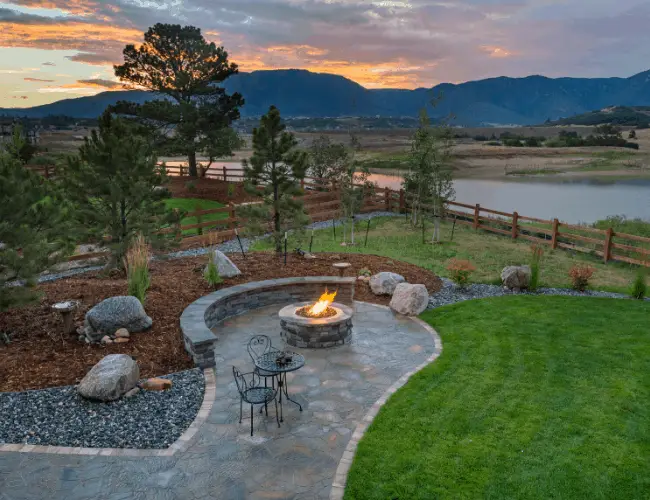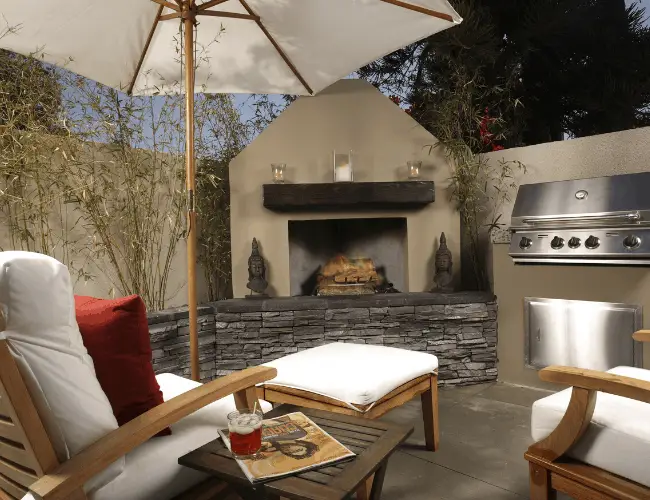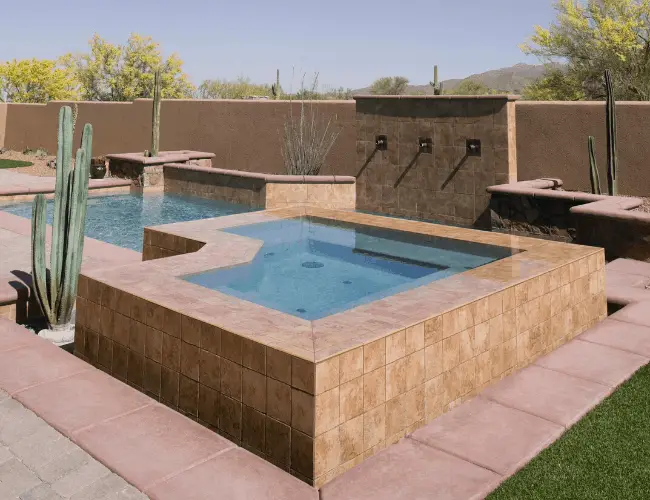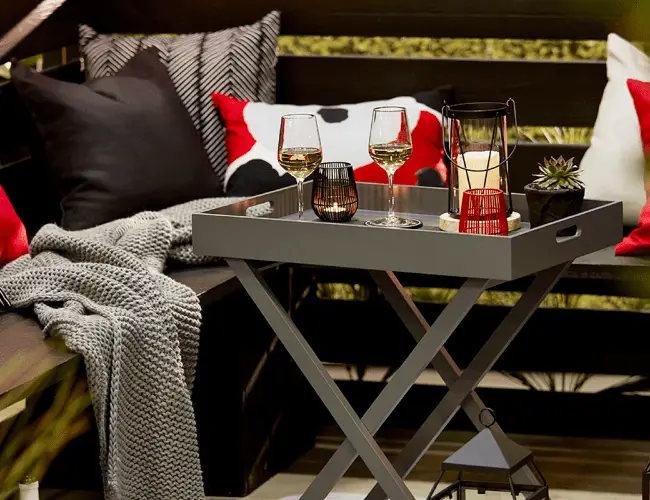The backyard is increasingly becoming an extension of the home. While many people are opting to be outside more, the weather does not always cooperate. Fortunately, there are many outdoor heating options to help people stay warm to extend their time in the yard.
Here are seven of the best ways to heat your outdoor space to keep you enjoying your love for the outdoors even when the weather is not ideal.
Table of Contents
Fire Pit

The fire pit is the classic outdoor heating option available. No longer is it about a hole in the ground with some large stones circling it. The choices are certainly numerous to where almost anyone can find one to fit their outdoor space and style.
Wood, propane, and natural gas are the three most common types available. A wood-burning fire pit will provide the most authentic, rustic experience that is difficult to beat in regard to the ambiance it creates. It will be your best option for heat of the three, but undoubtedly it will also be hardest to get the fire going.
Propane and natural gas provide the convenience of being able to have the fire blazing within seconds. For example, a propane fire pit typical only requires the user to turn open the propane tank value, push an ignitor button, and adjust a control knob. Look for the gas fire pit with the highest BTU rating for the best heat production.
Materials, colors, and sizes are plentiful. There is everything from compact fire pits, up to extra large options with a variety of materials available. Most people have no trouble finding the style that fits their taste in an appropriate size for their yard.
Chiminea

We wrote a relatively long article on the chiminea vs fire pit, so check that out if you want an in depth explanation on the differences. However, the picture above should provide a good idea of how a chiminea operates.
The word chiminea ultimately derives from the French word cheminée. As you may have already guessed or know, cheminée means chimney. You can think of the chiminea as a detached fireplace that is often moveable.
While once used in homes in South America for cooking and heating, the chiminea has now primarily become a favorite heat source in backyard settings.
A major benefit of the chiminea is its ability to keep smoke away from people’s eyes. The smoke moves up the stack instead of at the face like is common when sitting in chairs around the fire pit.
The traditional material of the chiminea was clay. Clay is still an option but many people opt for the durability of cast iron or cast aluminum as an alternative to clay.
Outdoor Fireplace

While certainly a luxury item, the outdoor fireplace is becoming much more common in backyards. It is often the centerpiece of the outdoor area, which provides the ultimate ambiance where family and friends can gather for hours.
The two types are free-standing and built-in.
A built-in fireplace needs to be constructed by a professional in most cases. When in place, it is often difficult to move without serious labor involved. It typically remains a permanent fixture of the yard in the location where it was originally constructed.
A free-standing fireplace can be installed by the homeowner and options are widely available at places like The Home Depot. You’ll clearly have more flexibility moving this type of outdoor fireplace should you need to relocate it the future.
Regardless of the type, great care needs to be taken in planning where the fireplace will be located given its size. Additionally, material is important to not only withstand the heat but also the elements. Common durable materials include stucco, stone, concrete, and brick.
Patio Heater

The most common type of patio heater is fueled by propane. The propane tank size used most often is the standard 20 pound tank you would use on a grill. Of course, this results in a cost of having to refill the propane tank as the fuel is used up.
As you can see in the above picture, propane patio heaters are equipped with an ignitor button and a gas control knob. The heat can be adjusted up and down with the knob to the user’s desired comfort level. The large saucer head reflects heat down so that it warms the people gathering around it instead of being wasted naturally moving upward. The use of a propane tank allows this heater to be portable and placed just about anywhere in yard.
In addition to propane patio heaters, there are also natural gas and electric heaters.
You will need a natural gas line running from your house to use a natural gas heater. This requires expert installation and is not something a DYIer should attempt. However, once installed you will have a convenient heat source without the worry of refueling. You will also commonly receive the best heat production of the patio heaters due to the high BTUs these heaters produce. Natural gas propane heaters operate similarly to propane heaters.
Electric patio heaters can often be used for indoor or outdoor heat needs. Heaters that are made for outdoor use will often be weatherproof to withstand the elements. They can be found in tabletop, freestanding, or wall-mounted models. They are an excellent alternative to the other types of heaters since there is no gas to worry about. They require a power outlet/source nearby, which can limit the areas where they can be placed. Furthermore, they are generally the weakest producers of heat of the three types of patio heaters.
Hot Tub

While the hot tub is not viewed as a traditional outdoor heating option, it certainly can be used to warm the body, even in the dead of winter. Hot tubs hold multiple people and are commonly heated using electric or natural gas. They can maintain a constant temperature unlike a bathtub that gradually cools. The common types of hot tubs are portable, in-ground, and free-standing.
A hot tub is not just a relaxation tool but can help with your health and wellness. This includes assistance with joint pain relief, back pain, stress relief, and improved range of motion (source).
Heated Patio Flooring

Radiant floor heating is starting to become popular outside of homes, particularly in areas that receive harsh winters. The heating melts away ice and snow so that shoveling is not required. Additionally, radiant heating installed in patio floors will radiate heat to objects and people above to keep them warm. This allows the patio space to be used for a longer periods during colder weather. The two types of radiant floor systems are hydronic (water-based) and electric.
Blanket

Outdoor blankets are not just for picnics. Purchase a couple that are dedicate to your outdoor space or grab some from inside. Snuggling in a blanket can outweigh any other option here, especially when done with someone who is special to you.

